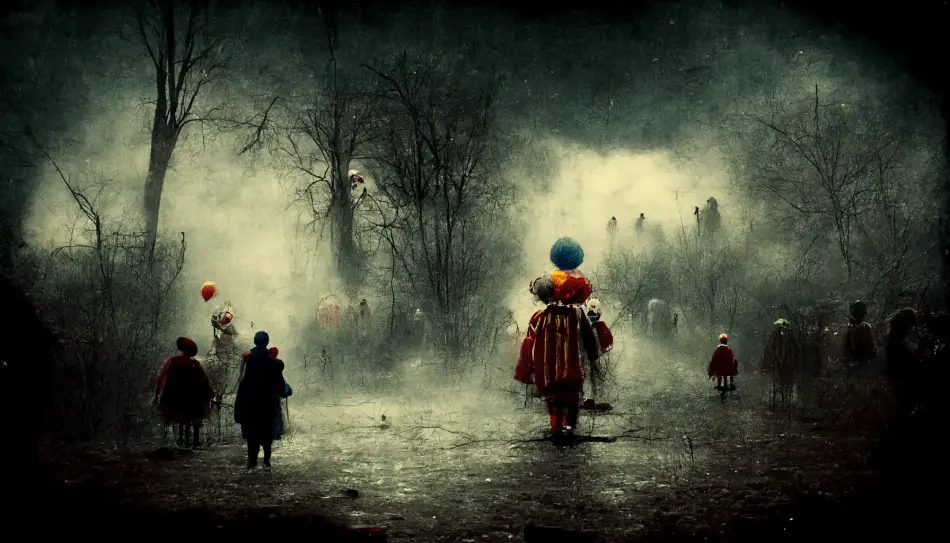Share the Lore!
By: Alex Postrado
How Clowns Transformed From Comical To Creepy
Let’s be real — there is something seriously eerie with clowns.
Sometimes, though, it is hard to pinpoint exactly which element of the archetypal clown is responsible for giving us the creeps.
Is it their multi-colored, one-piece suits?
Or the frilly wigs they wear?
And don’t even get me started on their makeup!
Their lipstick-smeared white faces, with smiles that seemingly blur the line between mischief and menace.
As seen in films and books — like Stephen King’s It, as well as the Batman franchise — modern media has time and time again shown us what the evil clown looks like.
All the while telling us that real-world clowns are only innocuous, greasepaint-clad entertainers at children’s parties.
Till today, this contrast continues to terrify a lot of us.
So much so that history has already seen the rise of a multitude of clown panics, and even the eventual birth of the fear of clowns.
A fear that has people wary for centuries now.
A fear that we will explore from its very beginning.
Who is the Evil Clown?
Do a quick search and you would learn that the evil clown is — in simpler terms — a “subversion of the traditional comic clown character” to depict a more unsettling persona than what we were used to.
This literary trope is done by way of horror elements and dark humor.
And though its origins remain unclear for the most part, its modern embodiment can be popularly associated with Batman’s archenemy, the Joker.
The character of the Joker has been around since 1940.
While it was not the earliest appearance of a sinister clown in fictional records, it was the representation that paved the way for the march of other evil clowns in current pop culture — with Pennywise, the dancing clown, now-seemingly carrying the torch on behalf of its contemporaries.
But, in terms of who or what started the trope, it is a lot more complex than you might think.
And it entails a journey that blends the fiendish and the amusing elements of the trickster archetype.
How History Created an Icon of Fear
For many of us, seeing a clown in the flesh could be quite daunting, to say the least.
The good news, though, is that we are actually supposed to feel that way.
Truth is, it is not a matter of when or how clowns transformed from funny to frightening.
As history tells us, clowns originally dawned with some intent to perturb.
Jester figures appear in practically all cultures.
And African Pygmies were the first recorded clowns in history — since at least 2500 BCE.
Though they did not wear the evocative clown costume we know today, they were placed in Egyptian Royal Courts for a similar purpose: to amuse — in their case — the Egyptian Pharaohs.
The Pygmy clowns were respected in their day. However, not as much as ancient Greeks revere Momus — the Greek God of Satire and Mockery.
Of course, ancient Rome and its archimimus is another past-clown remnant not to be ignored.
Just as medieval European countries have court jesters — the highly-respected entertainers chanced to ridicule the royalties without being punished — Rome also allowed its archimimus in serious functions, like funerals.
The archimimus would typically perform “impressions of the deceased” and they were “allowed to offend even mourning family members”.
In imperial China, court jesters were also common. One fool — in particular — was called Yu Sze.
And up to this day, it is believed that he was the only person who could poke holes in the policies of Emperor Qin Shi Huang — infamously mocking the leader’s plan to paint all of China’s Great Wall to its ultimate halt.
Hopi Native Americans similarly have stock clown characters in their culture. And these sacred performers interrupt rituals with their obscene antics.
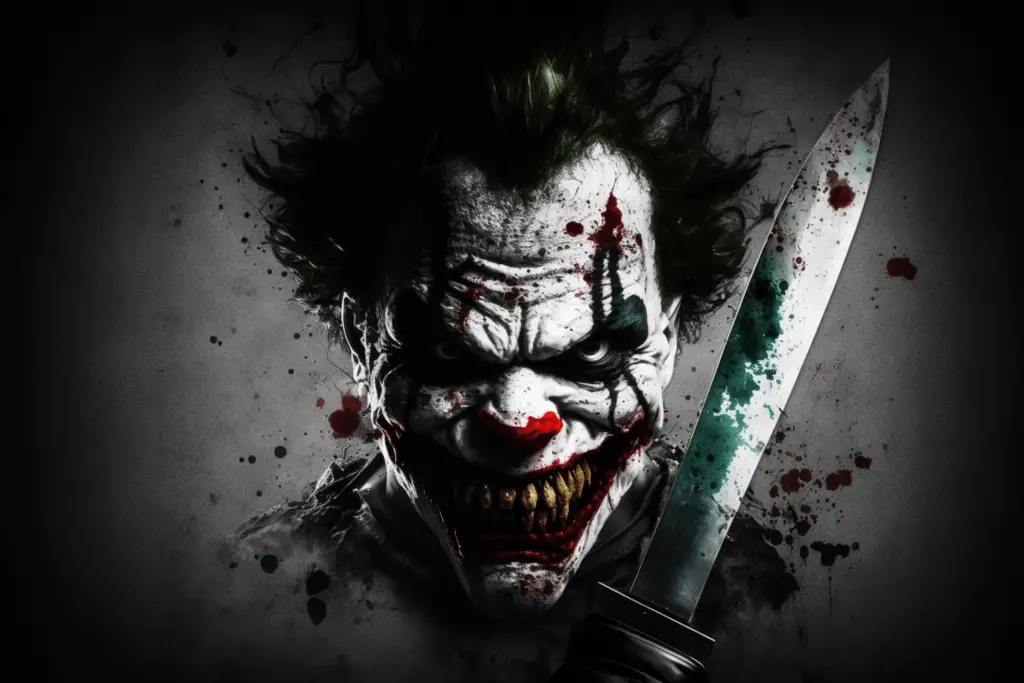
Well into both the 18th and 19th centuries, clown figures persisted in various parts of the globe — especially Europe.
It was during this time when renowned British pantomime Joseph Grimaldi honed his comic alter-ego, Joey — the character that ultimately served as the prototype of the modern clown.
Grimaldi was a master of physical comedy and he wore “bizarre, colorful costumes“, as well as the iconic white-and-red face makeup to each of his shows.
He was also the reason why clowns are — at times — still called “Joeys“.
But, behind the bright-colored persona Grimaldi plays onstage, lies a tragic backstory that author Charles Dickens unfolded when he edited the mime’s memoirs.
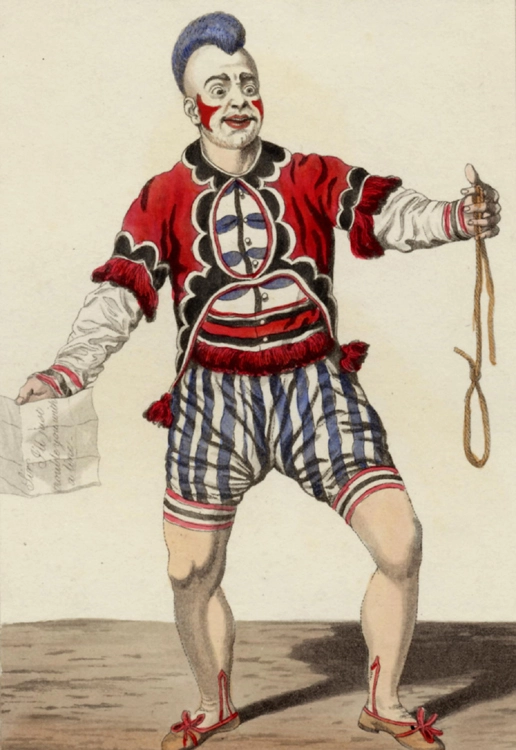
Grimaldi was born to an authoritarian father, was depressed in most of his years, was unfortunate with his own family life, and was in constant, agonizing pain due to all his stunts.
Enter the concept of the scary clown.
“A figure who is literally destroying himself to make his audiences laugh“.
Around the same time, Paris had its own Grimaldi, in the shape of Jean-Gaspard Deburau.
He was an absolute delight to French audiences.
However, his life behind the makeup was less tragic — in comparison to Grimaldi’s — and much darker.
One day in 1836, Deburau stained the history of pantomime with a blow to a boy’s head that eventually killed him.
The image of clowns has never been the same since then. How so, when two of the most prominent clowns from the heyday of the clowning era appeared to both be troubled underneath?
The emergence of murderous fool characters — like the one from the 1887 play La Femme de Tabarin and in later years, in dark circus sideshows of the Depression-era America — also didn’t help the growing evil impression on clowns.
And it goes so far, that despite the 50s to 60s popularity of “good” clowns like Bozo and Clarabell, for most of us today, clowns still elicit — at least — some amount of fear.

The Timeline of the Clown Panics
Believe it or not, 2016 was not the first time we have seen a media-fueled clown panic.
Sure, it was all over the internet back then — with pictures and footage of alleged evil clown sightings — but clown panics actually stretch back decades prior.
The year to mark is 1981. And it all started when local children from Brookline, Massachusetts reported multiple “creepy clown sightings” near schools and other public places.
Accounts say that the spotted clowns were trying to lure children into their vehicles.
Eventually, though, the case was dropped when no adult corroborated the stories told by the kids.
But, apparently, the damage has been done.
Around the summer of that year, the clown scare had already spread across numerous US cities and the hysteria was called “The Phantom Clowns of 1981″.
A bunch of other small-scale panics has also cropped up in the years following that.
But none of them were as talked about as The Northampton Clown of 2013.
The culprit was later discovered as a guy named Alex Powell.
Together with his friends, Powell — dressed up as Pennywise the Clown — pulled out elaborate scare-pranks on strangers — stunts that would eventually evolve into a viral phenomenon.
Not long after, The Staten Island Clown started to become the new talk of the town. However, it was soon revealed that the night-stalking clown of New York was only staged as part of a movie promotion.
Around 2014, more pranksters began hopping on the viral “scary clown sighting” trend, causing people to get even more anxious and the police to get twice as many calls.
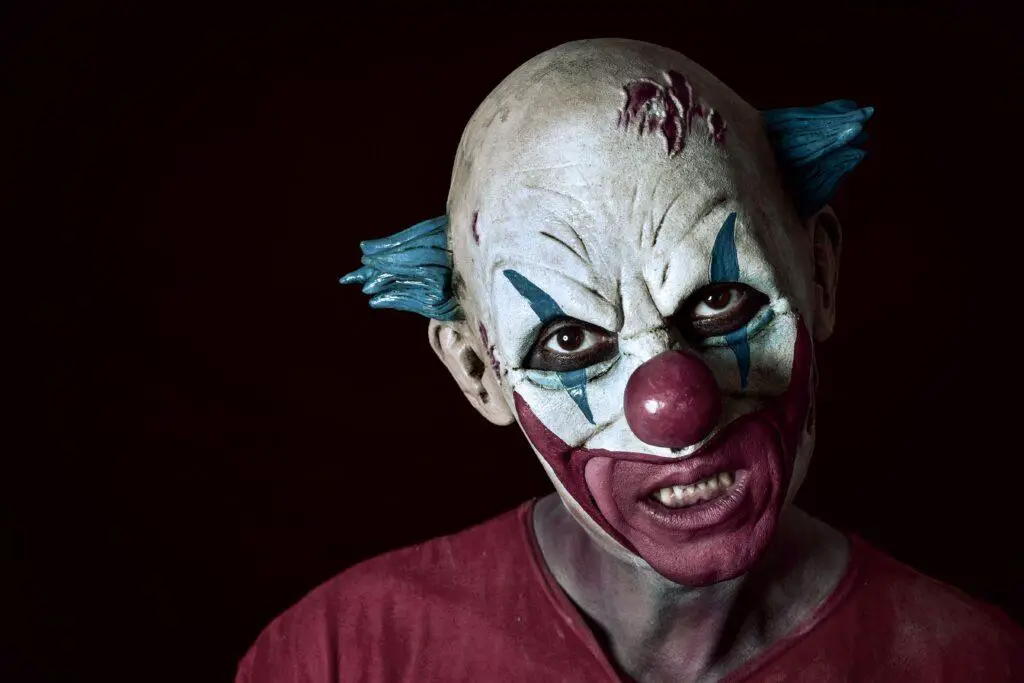
In California, The Wasco Clown was taking off. And in southern France, a holiday ban on clown costumes was imposed after reports of masked clowns harassing locals came out.
Another marketing stunt went viral in August of 2016. The clown-in-question was called Gags the Clown.
With increasing advancements in technology and social media, clown panics fan out faster than before.
And the multicolored hysteria from Gags the Clown’s publicity act set the tone for 2016’s Penn State clown hunts, where vigilante crowds of up to 6,000 people flood streets in search of “killer clowns“.
Then and there, it was clear how huge of an issue the clown madness was.
The panic across the globe was at a fever pitch at that point.
Some people have basically started overreacting.
In one case, a 16-year-old boy from Pennsylvania was fatally stabbed.
Ben Radford, author of Bad Clowns; Hoaxes, Myths, and Manias: Why We Need Critical Thinking; as well as The Martians Have Landed!: A History of Media-Driven Panics and Hoaxes, said that clown panics are actually part of a “larger context of moral panics” people have experienced throughout recent history.
In the early 1980s, the satanic panic was on the rise, along with ‘stranger danger’ panic in a subsequent fashion.
And it is important to note that clown panics started in May of 1982 — coincidentally the time other moral and social panics were prevalent.
Therefore proving that if clown panics swept off the world in 2016, it was more or less a manifestation of greater social unrest, and a reflection of the uncertainties and fears most have tried to ignore.
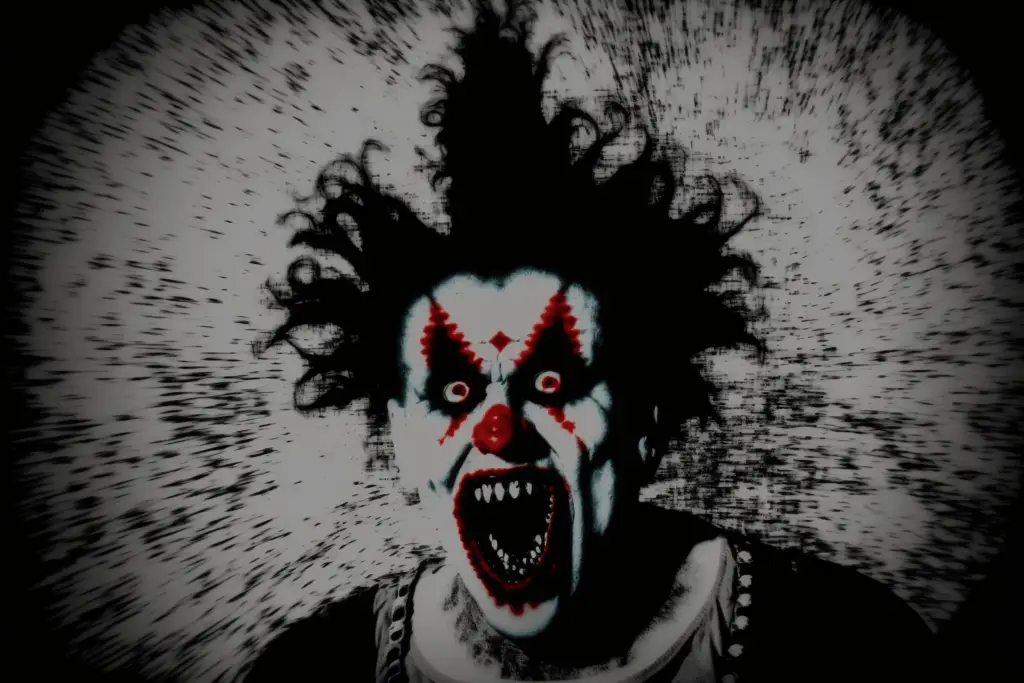
The Symbolism and Psychology Behind the Fear of Clowns
Coulrophobia is the general term for the debilitating fear of clowns.
Though others would find clowns frightening, people who suffer from this phobia would be scared stiff whenever a clown is near.
It is known that phobias are often “a deep-rooted psychological response tied to a traumatic event in someone’s past“.
Researchers have found that for some, the trauma can be traced to the intensifying portrayals of sinister clowns in modern media.
The existence of real killer clowns — like serial murderer John Wayne Gacy — also adds to the swelling fear of the chalk-white-faced comedian.
But, perhaps, the most feasible explanation as to why we largely find clowns scary is the fact that we can’t really see a clown’s face, and more so can’t read their expressions.
There is a certain eeriness in ambiguity and being scared is only one of our mind’s ways of tapping into our evolved adaptive responses to possible threats.
Moreover, the makeup of clowns, itself, falls into what we call “the uncanny valley“.
It is not hard to notice that clowns usually draw oversized smiling lips on their faces. Their thick, curved eyebrows — of course, heightened by their gaudy costumes — also give them a weird look, on the whole.
As if they are human, just like us, but not quite.
Regardless, the origins of clowns, alone, already elucidate how we are actually supposed to feel when we see clowns.
Unsettled, yet amused — possibly even laughing at our harshest truths, along with the living horrors we have created for ourselves.
References:
A surprising history of the creepy clown The History and Psychology of Clowns Being Scary How did funny clowns become scary? The Real Reason Clowns Creep Us Out A brief, creepy history of clown hoaxes and internet panics Clown scare is classic social panic: experts Clown Panics and Computers: Chaos Manifests in the Age of the Internet The great clown panic of 2016 is a hoax. But the terrifying side of clowns is real. Why Are People Afraid of Clowns? Understanding Coulrophobia: A Fear of Clowns Enough clowning around: why are people afraid of clowns?
